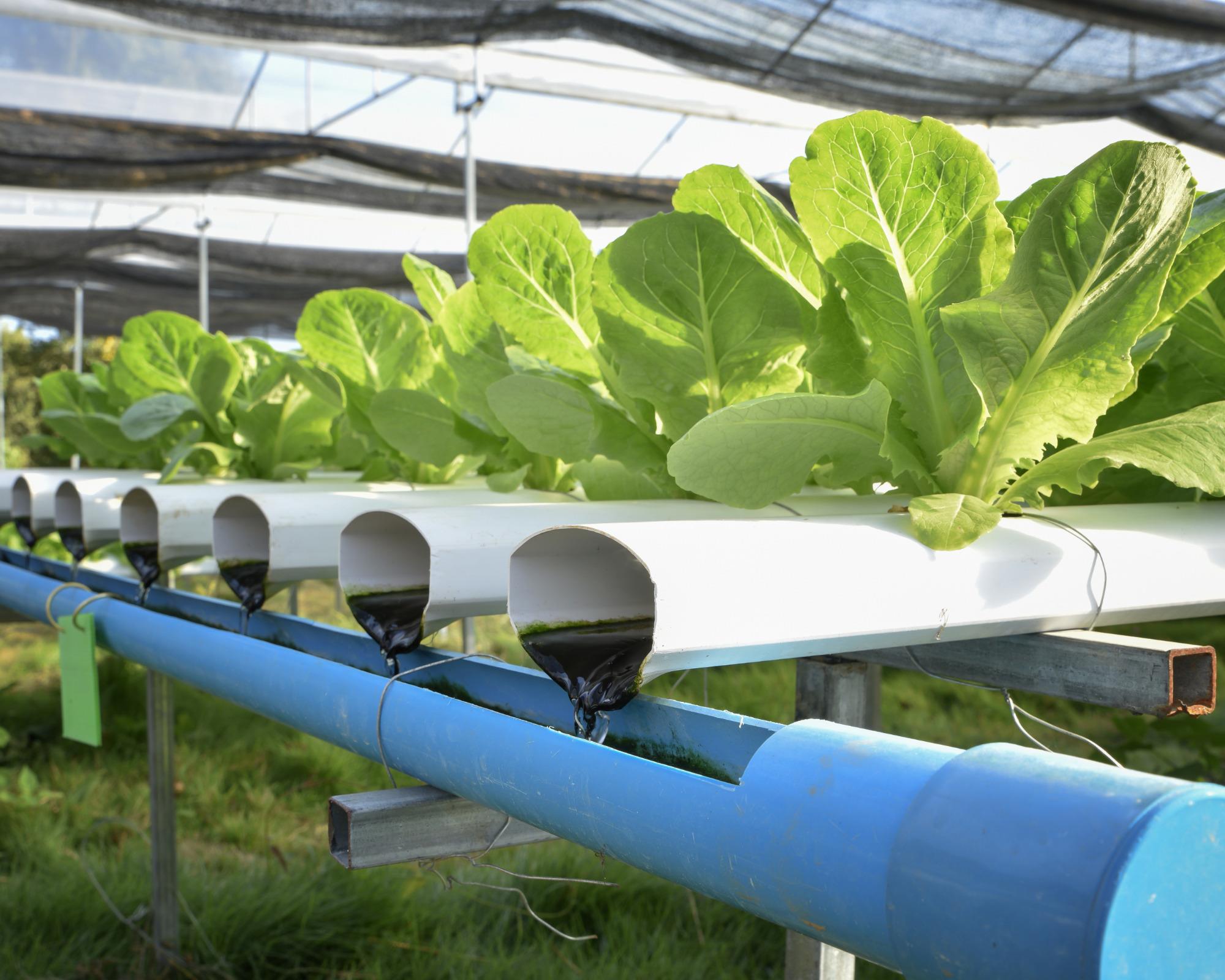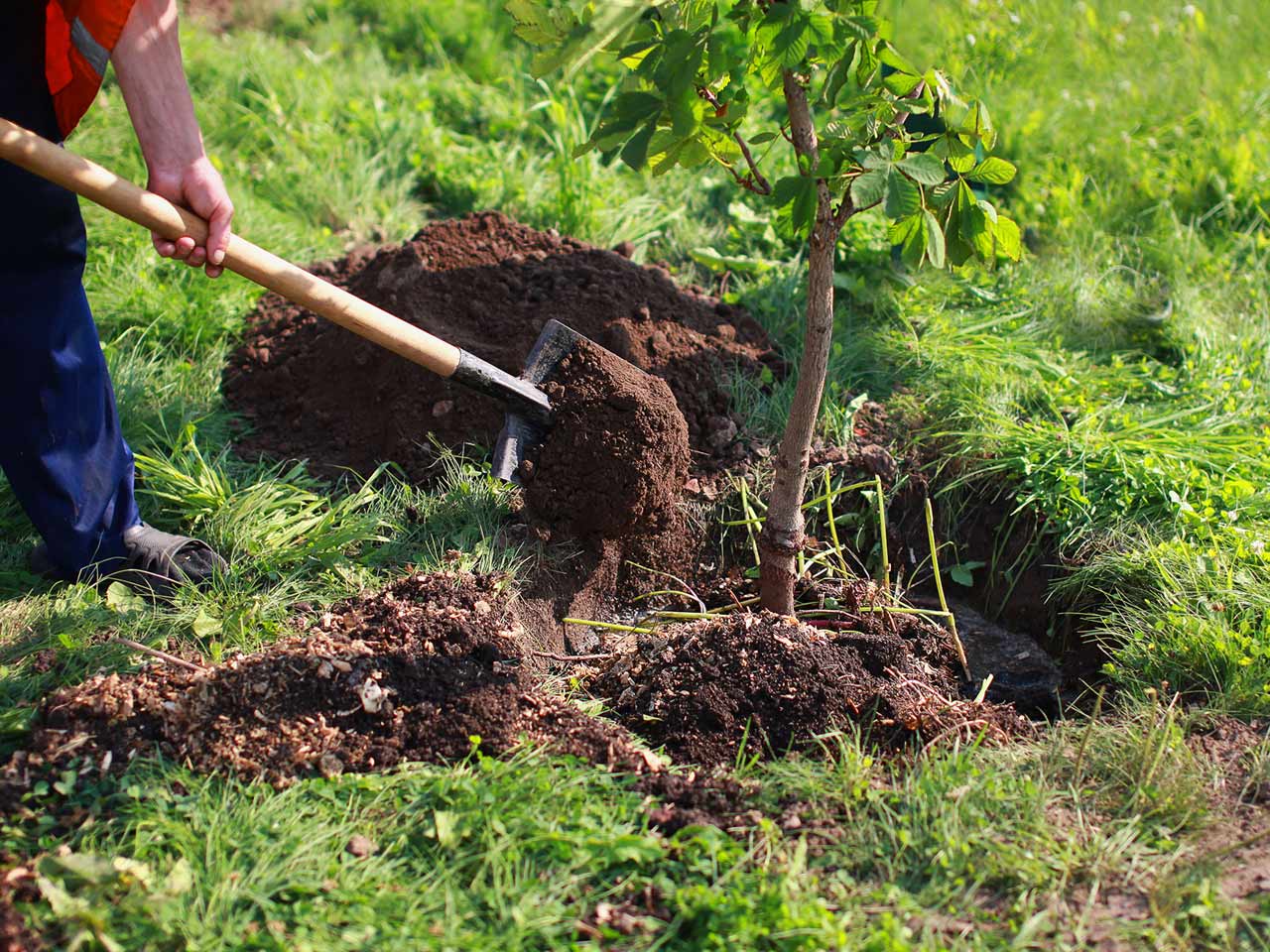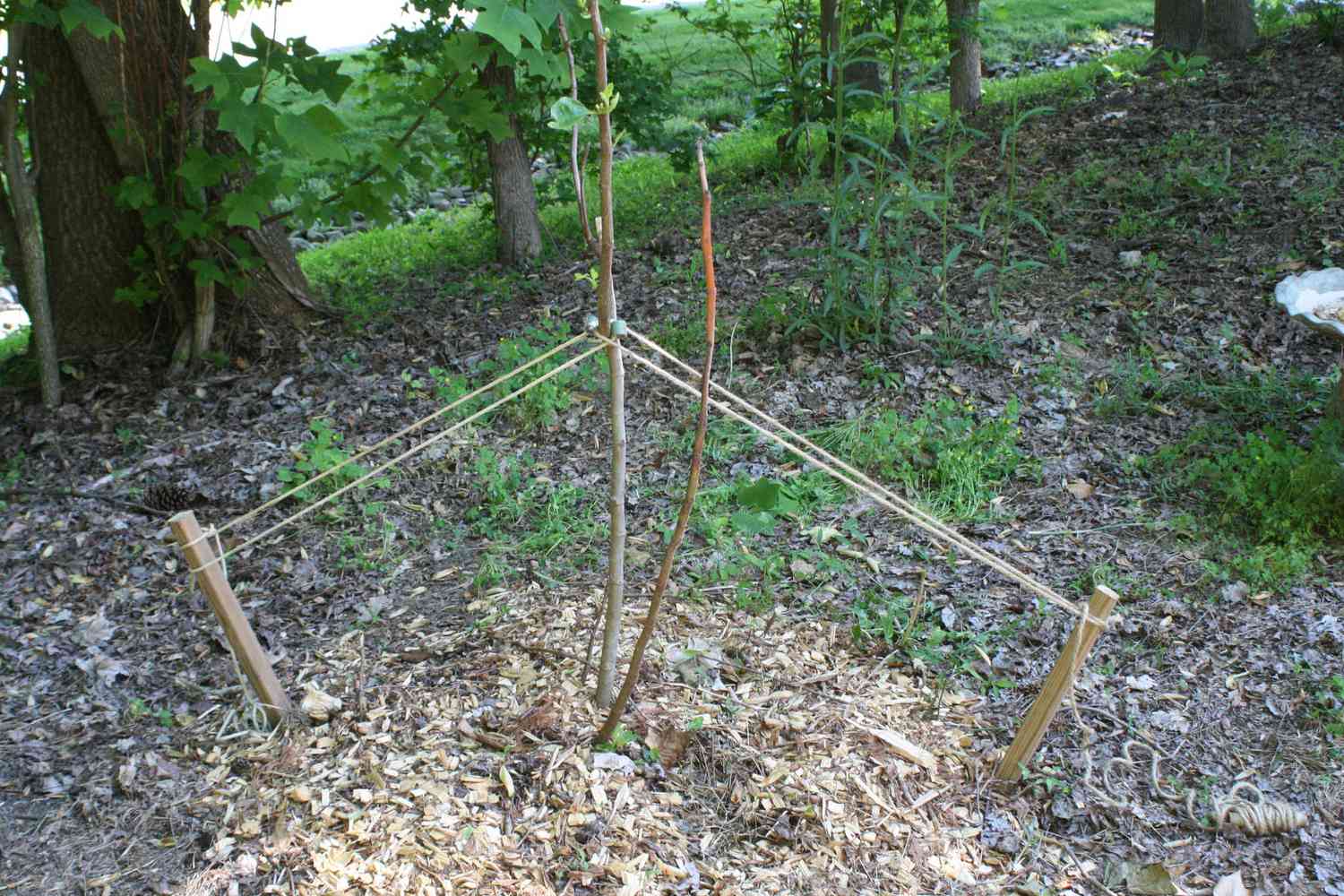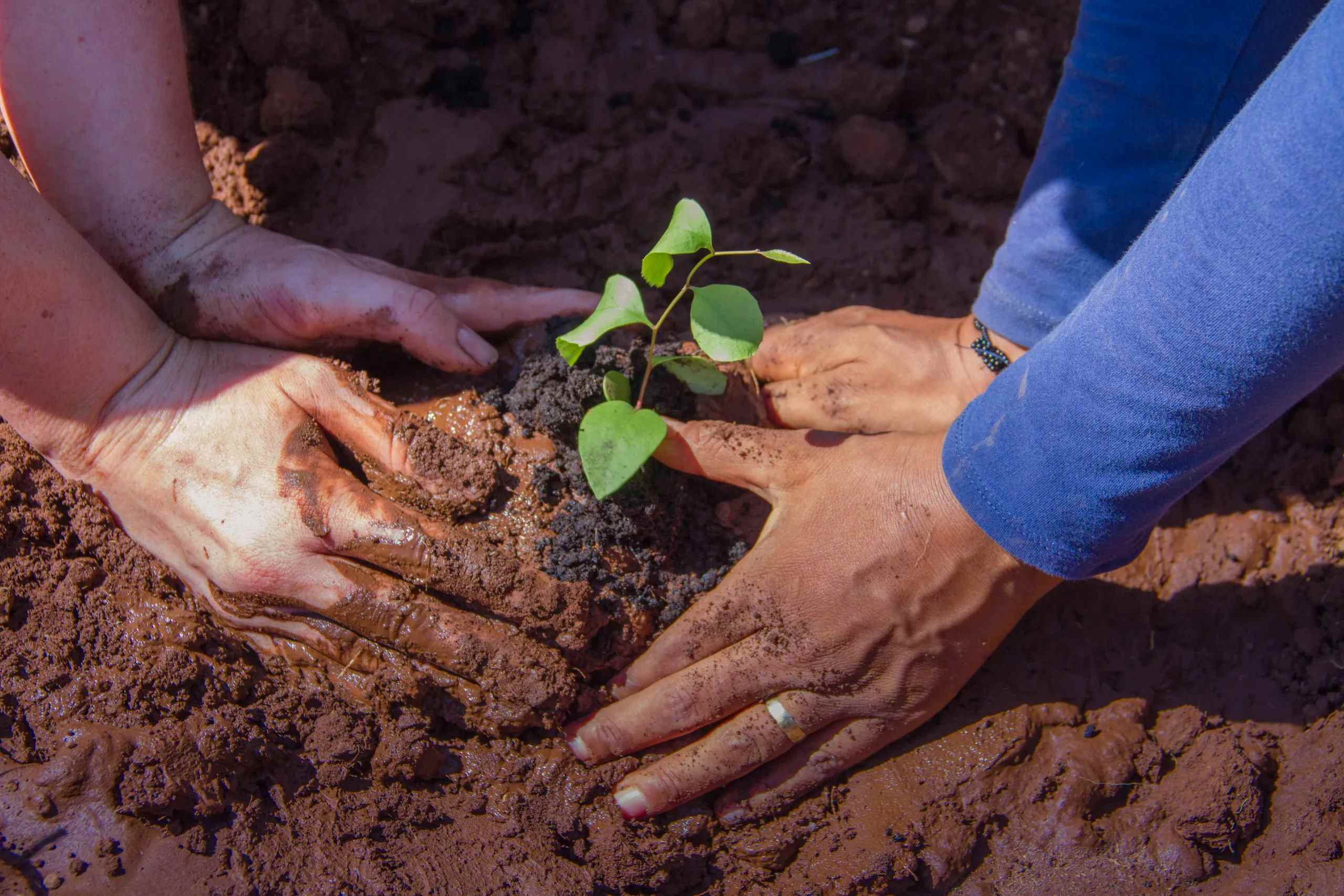Home>Gardening Tips and Tricks>Eco-Friendly Gardening>How To Save The Trees
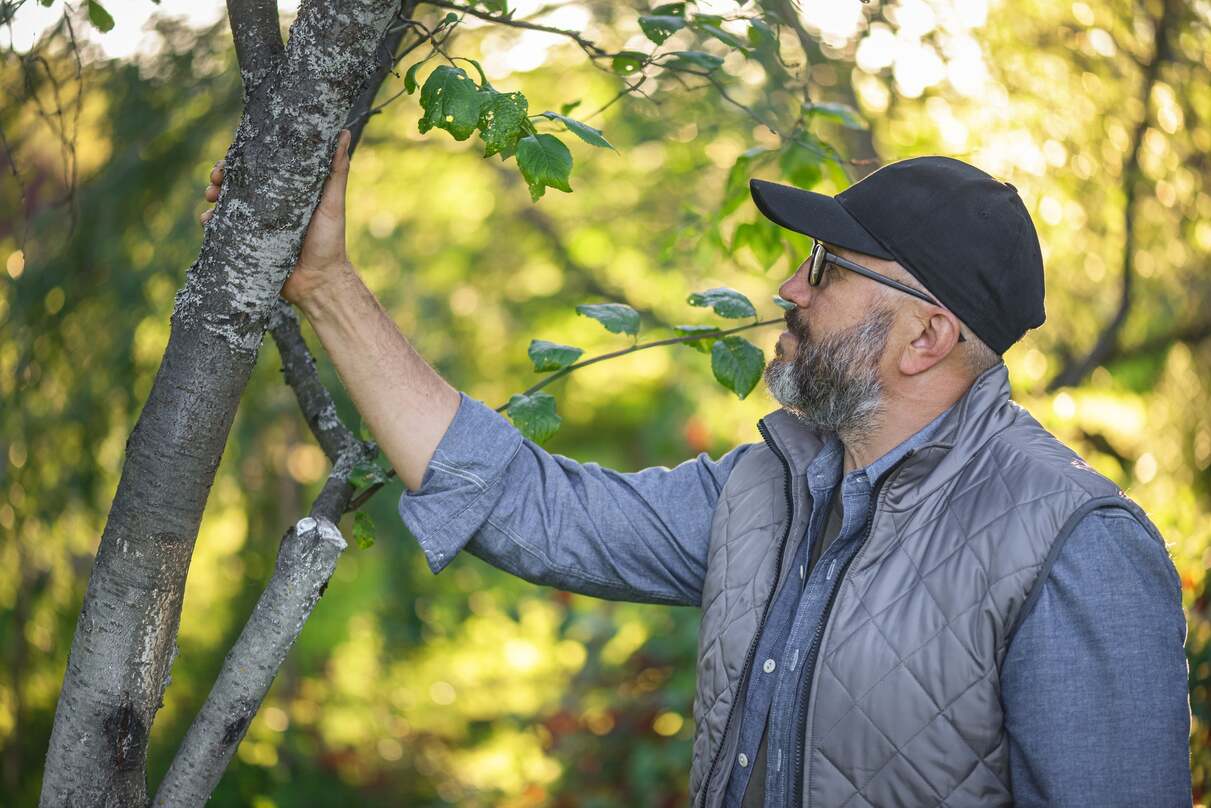

Eco-Friendly Gardening
How To Save The Trees
Modified: February 8, 2024
Learn eco-friendly gardening techniques to save trees and create a sustainable landscape. Discover tips and practices for nurturing plants while protecting the environment.
(Many of the links in this article redirect to a specific reviewed product. Your purchase of these products through affiliate links helps to generate commission for Chicagolandgardening.com, at no extra cost. Learn more)
Table of Contents
Introduction
Welcome to the world of eco-friendly gardening! If you’re passionate about both gardening and environmental sustainability, then you’ve come to the right place. In this article, we will explore the concept of eco-friendly gardening and how it can help us create a more sustainable and greener future.
Gardening has always been a popular pastime, but in recent years, there has been a surge of interest in eco-friendly gardening practices. As our understanding of the impact of human activities on the environment grows, many people are seeking ways to minimize their carbon footprint and make environmentally conscious choices in all aspects of their lives, including their gardens.
Eco-friendly gardening, also known as sustainable gardening or green gardening, goes beyond just growing beautiful plants. It’s about nurturing a harmonious relationship between people and nature. By adopting eco-friendly gardening practices, we can help protect the planet, conserve resources, and create a healthier and more vibrant ecosystem for all living beings.
In this article, we will delve into the importance of trees and the threats they face, as well as explore the myriad benefits of saving trees. We will then provide you with 10 practical ways to save trees, from planting new ones to reducing paper consumption and supporting tree conservation organizations. By the end of this article, you’ll be equipped with the knowledge and inspiration to make a positive impact on the environment through eco-friendly gardening.
Importance of Trees
Trees are not only beautiful and majestic, but they also play a vital role in our ecosystem. They are often referred to as the “lungs of the Earth” for their ability to absorb carbon dioxide and release oxygen through the process of photosynthesis. Here are some key reasons why trees are so important:
- Air purification: Trees help improve air quality by filtering pollutants and absorbing harmful gases, such as carbon monoxide, nitrogen dioxide, and sulfur dioxide. They act as natural air purifiers, making the air we breathe cleaner and healthier.
- Climate regulation: Trees play a crucial role in regulating climate patterns. Through the process of transpiration, trees release moisture into the atmosphere, which helps cool the surrounding areas and reduce the effects of heatwaves. They also provide shade, reducing the need for artificial cooling systems.
- Soil conservation: The root systems of trees help prevent soil erosion by holding the soil in place. This is particularly important in areas prone to flooding or heavy rainfall. Trees also improve soil fertility by adding organic matter as their leaves and branches decompose.
- Biodiversity support: Trees provide habitats and food sources for a wide range of species, including birds, insects, and mammals. The presence of trees in an ecosystem enhances biodiversity and promotes a healthy and balanced ecosystem.
- Water management: Tree canopies act as natural umbrellas, reducing the impact of heavy rainfall and preventing soil erosion. The roots of trees also help absorb water, preventing runoff and allowing it to slowly infiltrate into the groundwater table.
- Psychological benefits: Trees have a calming and soothing effect on our mental well-being. Spending time in natural environments with trees has been proven to reduce stress levels, improve mood, and enhance overall mental health.
These are just a few of the many reasons why trees are so important to our environment and to us. It is crucial that we recognize their value and take steps to protect and preserve them.
Threats to Trees
Despite their importance, trees face numerous threats that pose a risk to their survival. Understanding these threats is essential in order to address them effectively and protect our precious tree populations. Here are some of the main threats to trees:
- Deforestation: Perhaps the most significant threat to trees worldwide is deforestation. Large-scale clearing of forests for agriculture, logging, and urban development leads to the loss of valuable tree habitats and disruption of ecosystems.
- Climate change: Changes in temperature, rainfall patterns, and extreme weather events caused by climate change can have severe implications for trees. Droughts, heatwaves, and increased pests and diseases pose significant challenges to tree survival.
- Pests and diseases: Insects, fungi, bacteria, and other pathogens can wreak havoc on trees, causing extensive damage and sometimes even death. Examples include the emerald ash borer, Dutch elm disease, and pine beetle infestations.
- Illegal logging: The illegal timber trade is a major problem globally, driving unsustainable logging practices and contributing to deforestation. It not only threatens tree species but also undermines local economies and biodiversity conservation efforts.
- Urbanization: As cities expand, trees often face challenges in urban environments. Construction, pollution, compacted soil, and limited space for root growth can negatively impact tree health and longevity.
- Invasive species: Non-native invasive species can outcompete and displace native tree species, disrupting natural ecosystems. They can also introduce new pests and diseases, further threatening tree populations.
These threats to trees are interconnected, exacerbating each other’s impacts, and require a multi-faceted approach for effective mitigation. It is crucial that we take action to address these threats at both individual and collective levels to ensure the survival and well-being of our trees.
Benefits of Saving Trees
Protecting and preserving trees not only helps the environment but also provides a multitude of benefits to both humans and the planet. Here are some of the key benefits of saving trees:
- Climate change mitigation: Trees are vital in mitigating climate change. They absorb carbon dioxide, a greenhouse gas, from the atmosphere and store carbon in their trunks, branches, and leaves. By saving trees, we can help reduce the concentration of greenhouse gases and combat global warming.
- Air quality improvement: Trees act as natural air filters, trapping pollutants and releasing oxygen. By preserving trees, we can improve air quality, reducing the risk of respiratory illnesses and creating a healthier living environment.
- Water conservation: The dense root systems of trees help prevent soil erosion and increase water infiltration, reducing the risk of floods and maintaining healthy water levels in rivers and groundwater reserves.
- Biodiversity conservation: Trees provide habitats and resources for a wide range of plant and animal species. By saving trees, we protect the delicate balance of ecosystems and support biodiversity conservation efforts.
- Shade and energy conservation: The shade provided by trees can significantly reduce the need for air conditioning during hot summer months. By saving trees, we can reduce energy consumption and lower our carbon footprint.
- Psychological well-being: Spending time in green spaces with trees has been proven to have positive effects on our mental health and well-being. Preserving trees in our surroundings can contribute to reduced stress levels, improved mood, and overall improved quality of life.
These benefits highlight the critical role that trees play in sustaining the environment and supporting human life. By saving trees, we can create a more sustainable and resilient future for generations to come.
10 Ways to Save the Trees
Saving trees requires a collective effort and a commitment to making environmentally conscious choices. Here are 10 practical ways that you can contribute to tree conservation:
- Planting Trees: One of the most impactful ways to save trees is by planting new ones. Whether it’s in your backyard, community spaces, or through tree-planting initiatives, every tree planted adds to the green cover and helps combat deforestation.
- Reducing Paper Consumption: Opt for digital alternatives whenever possible to reduce your paper consumption. Send emails instead of printed letters, read e-books instead of physical books, and choose electronic billing and statements.
- Recycling and Reusing Paper: When you do use paper, make sure to recycle it properly. Also, consider reusing paper when appropriate, such as using the backside of printed sheets for jotting down notes.
- Conserving Energy: Energy conservation indirectly helps save trees. By using energy-efficient appliances, turning off lights when not in use, and relying on renewable energy sources, you reduce the demand for electricity generated from fossil fuels, which contribute to deforestation.
- Preserving Forests: Support organizations and initiatives aimed at protecting and preserving forests. These organizations work to prevent illegal logging, promote sustainable forestry practices, and create protected areas for biodiversity conservation.
- Avoiding Single-Use Items: Single-use items contribute to waste and deforestation. Opt for reusable items like cloth bags, water bottles, and coffee cups to minimize the demand for disposable products made from tree-derived materials.
- Practicing Sustainable Agriculture: Support sustainable agricultural practices that avoid clear-cutting forests and prioritize regenerative farming methods. Choose organic and locally sourced produce, reducing the demand for products linked to deforestation.
- Spreading Awareness: Educate others about the importance of trees and the threats they face. By raising awareness and promoting eco-friendly practices, you can inspire more people to take action and contribute to tree conservation efforts.
- Supporting Reforestation Projects: Contribute to reforestation projects financially or through volunteer work. These projects aim to restore degraded land and establish new forests, helping to offset deforestation and promote sustainable land management.
- Adopting Sustainable Wood Practices: If you do use wood products, make sure they come from sustainably managed forests. Look for certifications like the Forest Stewardship Council (FSC) label to ensure that the wood or paper products you purchase are responsibly sourced.
Implementing these actions in your daily life can make a significant difference in saving trees and contributing to a more sustainable future. Remember, every small step counts, and together we can protect and preserve our invaluable tree resources.
Planting Trees
Planting trees is a powerful and impactful way to contribute to tree conservation and mitigate the effects of deforestation. It not only helps to restore the natural balance of ecosystems but also provides numerous benefits to the environment and communities. Here’s why planting trees is so important and how you can get involved:
The Importance of Planting Trees
Trees play a crucial role in the environment by providing oxygen, absorbing carbon dioxide, and supporting biodiversity. Through the process of photosynthesis, trees absorb carbon dioxide and release oxygen into the air, helping to combat climate change and improve air quality. They also provide habitats for a wide variety of plant and animal species, promoting biodiversity and creating a healthy ecosystem.
Furthermore, trees contribute to soil conservation by preventing erosion and enhancing soil fertility. Their extensive root systems help to hold soil in place and improve its structure, allowing for better water infiltration and nutrient cycling. This, in turn, supports healthy vegetation growth and sustains the overall health of the ecosystem.
How to Plant Trees
If you’re interested in planting trees, here’s a step-by-step guide to help you get started:
- Choose the Right Tree: Select tree species that are native to your region and suited to the local climate and soil conditions. Native trees are more adapted to the environment, making them more resilient and easier to establish.
- Pick the Right Spot: Find a suitable location for planting your tree. Consider factors such as sunlight exposure, drainage, and proximity to other plants or structures. Make sure there is enough space for the tree to grow and reach its full potential.
- Prepare the Soil: Ensure the soil is well-prepared before planting. Remove any weeds or grass from the planting area, loosen the soil, and add organic matter, such as compost or mulch, to improve soil fertility and moisture retention.
- Plant the Tree: Dig a hole that is wide and deep enough to accommodate the tree’s root ball or container. Carefully place the tree in the hole, making sure it sits at the same level as or slightly higher than the surrounding soil. Backfill the hole with soil, gently firming it around the roots.
- Water and Mulch: After planting, water the tree thoroughly to help settle the soil and provide moisture for root growth. Apply a layer of mulch around the base of the tree, leaving a small space around the trunk. The mulch helps conserve moisture, suppress weeds, and regulate soil temperature.
- Maintain and Care: Regularly water the newly planted tree, especially during dry periods, to help it establish strong roots. Monitor for pests and diseases and take appropriate action. Prune as necessary to maintain a healthy and well-shaped tree.
- Get Involved in Community Tree-Planting Efforts: Participate in or initiate tree-planting events in your community. These initiatives bring people together and create a sense of shared responsibility for the environment.
Remember to consider the long-term growth and survival of the trees you plant. Regularly monitor their health and provide any necessary care to ensure their well-being and longevity.
The Impact of Planting Trees
By planting trees, you are not only beautifying your surroundings but also contributing to a more sustainable and resilient future. Trees improve air quality, conserve soil and water, support wildlife, provide shade, and enhance the overall well-being of communities. Your efforts in planting trees will have a lasting impact on the environment and future generations to come.
So, roll up your sleeves, grab a shovel, and start planting trees today. It’s a simple yet meaningful way to make a difference and be a part of the solution to protect and preserve our invaluable tree resources.
Reducing Paper Consumption
Reducing paper consumption is an essential step towards sustainable living and tree conservation. The excessive consumption of paper contributes to deforestation and the depletion of our valuable tree resources. By adopting paperless alternatives and making conscious choices, we can significantly minimize our environmental impact. Here are some effective ways to reduce paper consumption:
1. Digital Communication: Embrace digital communication methods such as email, instant messaging, and video calls to minimize the need for printed documents. Sending electronic documents instead of physical copies not only saves paper but also reduces energy consumption and transportation emissions.
2. E-books and Digital Subscriptions: Instead of purchasing physical books, opt for e-books or audiobooks. Digital subscriptions to magazines and newspapers allow you to access content without the need for paper copies. Consider using e-readers or tablets to read your favorite novels and articles.
3. Electronic Billing and Statements: Choose to receive bills, bank statements, and other documents electronically. Most service providers offer the option to receive invoices and statements via email or through online accounts. This reduces paper waste and clutter in your mailbox.
4. Print Only When Necessary: Before hitting the print button, ask yourself if the document truly needs to be printed. When possible, store digital copies on your computer or in the cloud. If printing is necessary, opt for double-sided printing to reduce paper usage.
5. Note-Taking Apps and Digital Organizers: Utilize note-taking apps and digital organizers to store and manage your notes, to-do lists, and reminders. This eliminates the need for physical sticky notes and paper notebooks, reducing paper waste.
6. Opt for Online Forms and Applications: When filling out forms or applications, look for online alternatives whenever possible. Many organizations now offer online fillable forms, reducing the need to print and mail physical copies.
7. Use Reusable and Eco-friendly Options: Replace single-use paper products with reusable alternatives. For example, carry a reusable water bottle instead of purchasing bottled water, and use cloth towels instead of paper towels.
8. Choose FSC Certified Paper: When you do need to use paper, choose products made from Forest Stewardship Council (FSC) certified paper. FSC-certified paper is responsibly sourced from sustainably managed forests, ensuring the protection of biodiversity and the environment.
9. Optimize Printing Settings: Adjust your printer settings to print in draft mode or grayscale whenever possible. This reduces ink or toner usage and extends the life of your printer cartridges.
10. Recycling and Responsible Disposal: Properly recycle any paper waste that you generate. Research local recycling guidelines and ensure that you separate recyclable paper from other waste. Additionally, consider composting paper products that are soiled or cannot be recycled.
By implementing these practices in your daily life, you can significantly reduce paper consumption and contribute to the conservation of trees and forests. Every effort counts and together we can make a positive impact on our planet’s health and sustainability.
Recycling and Reusing Paper
Recycling and reusing paper are crucial steps in reducing waste, conserving resources, and promoting sustainability. Instead of throwing paper in the trash bin, we can give it a new lease on life through recycling or finding creative ways to reuse it. Here’s why recycling and reusing paper are important and how you can incorporate these practices into your daily life:
The Importance of Recycling Paper
Recycling paper helps to conserve trees, energy, and water while reducing greenhouse gas emissions and landfill waste. By diverting paper from landfills, we can significantly reduce the demand for new paper production, which often involves cutting down trees and consuming vast amounts of resources. Recycling also reduces the pollution associated with paper production, such as harmful chemicals and emissions.
When paper is recycled, it goes through a process where it is broken down into pulp, cleaned, and then made into new paper products. This closed-loop system helps to reduce the environmental impact of paper consumption, conserve resources, and support a more sustainable and circular economy.
How to Recycle Paper
Follow these steps to effectively recycle paper:
- Segregate Paper Waste: Separate paper waste from other types of waste in your home or workplace. Use separate recycling bins or bags specifically for paper.
- Check Local Recycling Guidelines: Research the recycling guidelines in your area. Find out what types of paper can be recycled and how they need to be prepared (e.g., shredded, folded, or flattened).
- Remove Contaminants: Before recycling, remove any non-paper materials such as plastic windows, metal clips, or rubber bands. These items can interfere with the recycling process and contaminate the paper load.
- Reuse at Home or Office: Before recycling, consider if the paper can be reused. For example, use the backside of printed sheets for taking notes or printing drafts.
- Take Advantage of Curbside Recycling: If available in your area, use the curbside recycling service provided by your local waste management facility. Place paper waste in designated recycling bins or bags on scheduled collection days.
- Utilize Recycling Centers: If curbside recycling is not available, find nearby recycling centers or drop-off locations where you can take your paper waste for recycling. These centers are equipped to handle various types of paper products.
- Support Paper Recycling Initiatives: Stay informed about local or community-based paper recycling programs and support their efforts. These initiatives often organize events or collection drives to encourage paper recycling on a larger scale.
Reusing Paper in Creative Ways
Aside from recycling, we can also find innovative ways to reuse paper. Here are some suggestions:
- Make Homemade Crafts: Use old newspapers, magazines, or scrap paper to create crafts, greeting cards, or gift tags. Get creative and involve children in fun DIY projects that give paper a new purpose.
- Use as Wrapping Paper: Repurpose colorful magazine pages or large sheets of used paper as gift wrap. This adds a unique and eco-friendly touch to your presents.
- Create Paper Mache Art: Mix shredded paper with water and glue to create a pulp that can be molded into various shapes. Use it for paper mache sculptures and crafts.
- Donate to Schools or Art Centers: Contact local schools, art centers, or community organizations to see if they accept used paper for art projects or classroom activities.
- Compost Paper Products: If the paper is clean and free from any contaminants, consider adding it to your compost pile. Paper can add carbon-rich material to the compost and help create nutrient-rich soil.
Recycling and reusing paper are simple yet impactful ways to reduce waste and conserve resources. By incorporating these practices into our daily lives, we can contribute to a more sustainable future while promoting a circular economy and protecting our valuable tree resources.
Conserving Energy
Conserving energy is not only beneficial for reducing our carbon footprint but also plays a significant role in tree conservation and sustainability efforts. Energy production often relies on non-renewable resources, which contribute to deforestation and environmental degradation. By adopting energy-saving practices, we can minimize the demand for energy and help protect our valuable tree resources. Here are some effective ways to conserve energy:
1. Use Energy-Efficient Appliances: When it’s time to replace household appliances, choose those that have high energy efficiency ratings. Energy-efficient appliances consume less electricity, reducing both your energy consumption and utility bills.
2. Unplug Electronics and Devices: Many electronic devices and appliances continue to use energy when they are in standby mode, also known as vampire power. Unplug devices that are not in use or use power strips to easily switch off multiple devices at once.
3. Optimize Heating and Cooling: Proper insulation and weatherstripping can help maintain a comfortable indoor temperature, reducing the need for excessive heating or cooling. Use natural ventilation and ceiling fans to circulate air and minimize the use of air conditioning.
4. Harness Natural Light: Make use of natural light during the day by opening curtains and blinds. This reduces the need for artificial lighting and saves energy. When artificial lighting is necessary, use energy-efficient LED bulbs.
5. Adjust Thermostat Settings: Lower the thermostat during colder months and raise it during warmer months. A slight change in temperature can make a significant difference in energy consumption. Consider using a programmable thermostat to automatically adjust temperatures based on your schedule.
6. Reduce Water Heating Energy: Set the water heater temperature to an energy-efficient level and insulate the hot water pipes. Wash clothes in cold water whenever possible and take shorter showers to save both energy and water.
7. Maximize Natural Ventilation: When weather permits, open windows and doors to allow fresh air to circulate, reducing the need for air conditioning and fans. This not only saves energy but also helps create a healthier indoor environment.
8. Energy-Saving Lighting Practices: Turn off lights when you leave a room and make use of natural daylight whenever possible. Consider installing motion sensors or timers for outdoor lighting to ensure it operates only when needed.
9. Efficient Laundry and Dishwashing: When using washing machines and dishwashers, make sure to run full loads. This maximizes the use of energy and water per cycle and reduces the number of times the appliances need to be operated.
10. Practice Smart Energy Management: Monitor your energy consumption through smart energy management systems or energy monitoring devices. This helps you identify areas of high energy use and adjust your habits accordingly.
By adopting these energy-saving practices, we can not only reduce our environmental impact but also contribute to tree conservation efforts. Conserving energy reduces the demand for energy production, which often relies on the burning of fossil fuels and contributes to deforestation. Together, we can create a more sustainable future while protecting our valuable tree resources.
Preserving Forests
Preserving forests is crucial for the well-being of our planet and the countless species that call these ecosystems home. Forests provide a wide range of ecological, social, and economic benefits, making their conservation a global priority. Here are some key reasons why preserving forests is essential and how we can contribute to this important cause:
The Importance of Forests
Forests are the lungs of the Earth, playing a vital role in regulating the climate by absorbing carbon dioxide and releasing oxygen through the process of photosynthesis. They also provide habitats for millions of plant and animal species, supporting biodiversity and maintaining ecosystem balance. Forests are also a valuable resource for indigenous peoples and local communities who rely on them for food, medicine, and livelihoods.
Additionally, forests act as natural carbon sinks, storing carbon and helping to mitigate the impacts of climate change. They regulate water cycles, prevent soil erosion, and provide clean water for rivers, lakes, and underground aquifers. Forests are also important for recreation, tourism, and cultural enrichment, offering opportunities for outdoor activities and connecting people with nature.
How to Preserve Forests
Preserving forests requires a collective effort and a combination of conservation strategies. Here’s how individuals and communities can contribute to the preservation of forests:
- Support Forest Conservation Organizations: By donating to reputable forest conservation organizations, you can contribute to vital initiatives that protect and manage forests worldwide. These organizations work to combat deforestation, promote sustainable forestry practices, and restore degraded forests.
- Choose Sustainable and Certified Wood Products: Be mindful of the products you purchase, opting for sustainably sourced wood and paper products. Look for certifications such as the Forest Stewardship Council (FSC) label, which ensures responsible forest management and supports sustainable livelihoods.
- Reduce demand for Unsustainable Products: Minimize your consumption of forest-derived products that have a high environmental impact, such as tropical hardwoods or products linked to deforestation, like palm oil. As consumers, we have the power to influence market demand and shift towards more sustainable alternatives.
- Practice Responsible Tourism: When visiting forests or natural areas, ensure your presence has minimal impact. Follow designated trails, avoid littering, and respect wildlife habitats. Support eco-friendly accommodations and tour operators that prioritize sustainable practices.
- Advocate for Forest Protection: Use your voice to advocate for strong forest protection policies at the local, national, and international levels. Engage with policymakers, participate in public consultations, and support initiatives that promote sustainable land use planning and conservation.
- Participate in Reforestation Efforts: Get involved in community-based reforestation projects or tree-planting initiatives. These activities help restore degraded forests, enhance biodiversity, and contribute to landscape connectivity.
- Support Indigenous Peoples and Local Communities: Recognize and respect the land rights of indigenous peoples and local communities who have been living sustainably in forests for generations. Supporting their traditional knowledge and livelihoods helps protect and preserve forests.
- Practice Sustainable Agriculture and Forestry: Promote and implement sustainable agricultural and forestry practices that minimize the conversion of forests into agricultural lands. Encourage methods that prioritize biodiversity conservation, soil health, and the use of agroforestry systems.
- Reduce Your Carbon Footprint: Lower your carbon footprint by embracing a sustainable lifestyle. Conserve energy, reduce waste, and transition to renewable energy sources to reduce the demand for fossil fuels, which contribute to deforestation and climate change.
- Engage in Forest Education and Awareness: Educate yourself and others about the importance of forests and the threats they face. Spread awareness through social media, community events, and educational programs to inspire others to take action.
Preserving forests is essential for the health of our planet and the well-being of future generations. By implementing these strategies and supporting forest conservation efforts, we can protect these invaluable ecosystems and ensure their sustainability for years to come.
Supporting Tree Conservation Organizations
Tree conservation organizations play a vital role in protecting and preserving our precious tree resources and the ecosystems they support. These organizations work tirelessly to combat deforestation, promote sustainable land management practices, and raise awareness about the importance of trees and forests. By supporting these organizations, we can contribute to their efforts and make a tangible impact on tree conservation. Here’s why supporting tree conservation organizations is essential and how you can get involved:
The Importance of Tree Conservation Organizations
Tree conservation organizations are at the forefront of efforts to protect and restore forests worldwide. They play a pivotal role in preserving biodiversity, mitigating climate change, and promoting sustainable land use practices. These organizations work on a range of activities, including:
- Forest Protection: They actively work to combat deforestation through efforts such as highlighting the environmental importance of forests and advocating for the implementation of policies and regulations that prevent illegal logging and land conversion.
- Sustainable Land Management: Tree conservation organizations promote sustainable land management practices that prioritize reforestation, agroforestry, and ecosystem restoration. They work with local communities and stakeholders to restore degraded land and establish sustainable land-use practices that benefit both communities and nature.
- Research and Monitoring: These organizations conduct scientific research and monitoring to assess the health and ecological vitality of forests. This valuable data helps inform conservation strategies and policy decisions.
- Capacity Building and Education: Tree conservation organizations engage in educational initiatives to increase awareness about the importance of trees and forests. They provide training and resources to local communities, empowering them to actively participate in forest management and conservation activities.
- Collaboration and Advocacy: These organizations collaborate with governments, businesses, and other stakeholders to advocate for strong forest conservation policies. They work to influence public opinion, mobilize support, and encourage sustainable practices across various sectors.
How to Support Tree Conservation Organizations
There are several ways that individuals can support tree conservation organizations and contribute to their important work:
- Donate: Financial contributions are critical to the success of tree conservation organizations. Research and identify reputable organizations with a strong track record of effective conservation efforts, and donate to support their initiatives.
- Volunteer: Many tree conservation organizations offer volunteer opportunities. Get involved in tree planting campaigns, reforestation projects, or other initiatives where your time and skills can make a difference.
- Spread Awareness: Use social media and other platforms to raise awareness about tree conservation and the work of these organizations. Share their messages, success stories, and campaigns to inspire others to take action.
- Participate in Fundraising Events: Join fundraising events organized by tree conservation organizations. Participate in charity runs, sponsored walks, or other initiatives that help support their activities financially.
- Advocate for Policy Change: Stay informed about current environmental policies and advocate for legislation that promotes tree conservation. Write to elected officials, sign petitions, and work with like-minded individuals and organizations to push for change.
- Engage in Corporate Partnerships: Encourage businesses and corporations to support tree conservation efforts through partnerships, sponsorship, or implementing sustainable practices in their operations. Use your consumer power to support environmentally responsible companies.
- Participate in Tree-Planting Campaigns: Get involved in tree-planting initiatives organized by tree conservation organizations. By actively participating in such campaigns, you can directly contribute to reforestation and ecosystem restoration efforts.
- Support Local Initiatives: Research and support local tree conservation initiatives in your community. Engage with local environmental groups, participate in tree care activities, or donate to local projects focused on preserving and restoring urban forests.
Supporting tree conservation organizations is vital for the protection and preservation of our forests. Together, through our financial contributions, advocacy, and active participation, we can make a meaningful impact on tree conservation and create a greener and more sustainable future.
Conclusion
Engaging in eco-friendly gardening practices and supporting tree conservation efforts are essential steps towards creating a more sustainable and greener future. By understanding the importance of trees, the threats they face, and the benefits of saving them, we can adopt eco-friendly gardening methods that minimize our environmental impact and promote the well-being of both nature and humanity.
From planting trees and reducing paper consumption to recycling, conserving energy, and supporting tree conservation organizations, there are numerous ways for individuals to make a positive impact. Tree conservation organizations play a vital role in protecting and preserving forests, advocating for sustainable land management practices, and raising awareness about the importance of trees and forests. By supporting these organizations through donations, volunteering, and spreading awareness, we can contribute to their important work and collectively protect our valuable tree resources.
Remember, every small step counts. Whether it’s planting a tree in your backyard, reducing paper waste, or supporting tree conservation initiatives, each action contributes to the greater goal of creating a sustainable and eco-friendly environment. Let’s embrace the power of eco-friendly gardening and take responsibility for nurturing our planet, one tree at a time.

